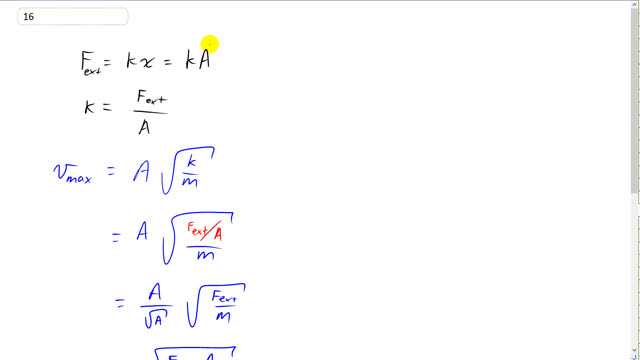
It takes a force of 91.0 N to compress the spring of a toy popgun 0.175 m to “load” a 0.160-kg ball. With what speed will the ball leave the gun if fired horizontally?

In order to watch this solution you need to have a subscription.
This is Giancoli Answers with Mr. Dychko. The external force to compress this spring in the toy pop gun is going to be k times the amount that the spring is compressed. So, the amount that it gets compressed is going to be equals the amplitude of this oscillation because the spring starts at its equilibrium position and then it gets compressed its maximum amount. And so we can solve for k here by saying that it's going to be force external divided by A after we divide both sides by A. And then we look at this v max formula which says it's amplitude times the square root of the spring constant divided by mass. And then substitute for k, the force external over A. And what I want to show here is that this force external over A is the same as A over square root A. This A is in the denominator and it's under the square root sign. And we're left with force external over m under the square root sign when we take this A square root A out. And then A over square root A is square root A. And so we can take it back under this square root sign and we get force external times A over m, all square rooted is going to be the answer to our question. Hopefully that made some sense there with algebra. So, we have square root of ninety-one newtons times 0.175 meters divided by 0.16 kilograms which gives about 9.98 meters per second will be the maximum speed and that'll be the speed that launches from the pumpkinette.